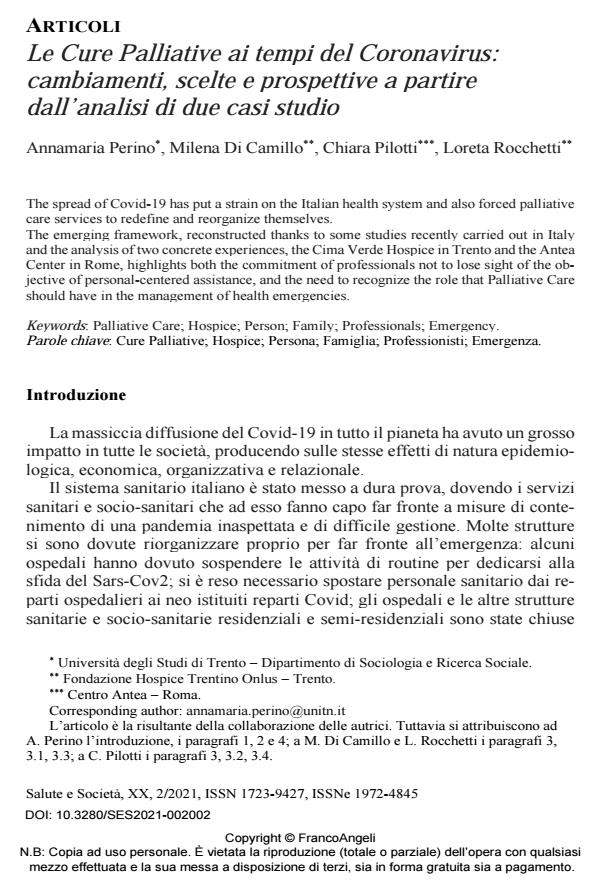Le Cure Palliative ai tempi del Coronavirus: cambiamenti, scelte e prospettive a partire dall’analisi di due casi studio
Journal title SALUTE E SOCIETÀ
Author/s Annamaria Perino, Milena Di Camillo, Chiara Pilotti, Loreta Rocchetti
Publishing Year 2021 Issue 2021/2
Language Italian Pages 16 P. 9-24 File size 221 KB
DOI 10.3280/SES2021-002002
DOI is like a bar code for intellectual property: to have more infomation
click here
Below, you can see the article first page
If you want to buy this article in PDF format, you can do it, following the instructions to buy download credits

FrancoAngeli is member of Publishers International Linking Association, Inc (PILA), a not-for-profit association which run the CrossRef service enabling links to and from online scholarly content.
The spread of Covid-19 has put a strain on the Italian health system and also forced palliative care services to redefine and reorganize themselves. The emerging framework, reconstructed thanks to some studies recently carried out in Italy and the analysis of two concrete experiences, the Cima Verde Hospice in Trento and the Antea Center in Rome, highlights both the commitment of professionals not to lose sight of the ob-jective of personal-centered assistance, and the need to recognize the role that Palliative Care should have in the management of health emergencies.
Keywords: Palliative Care; Hospice; Person; Family; Professionals; Emergency.
Annamaria Perino, Milena Di Camillo, Chiara Pilotti, Loreta Rocchetti, Le Cure Palliative ai tempi del Coronavirus: cambiamenti, scelte e prospettive a partire dall’analisi di due casi studio in "SALUTE E SOCIETÀ" 2/2021, pp 9-24, DOI: 10.3280/SES2021-002002